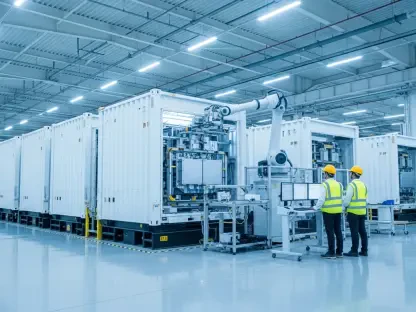The restaurant industry is experiencing rapid growth, with annual sales reaching $1 trillion and projections of adding 200,000 new jobs. However, this growth has also led to increased pressure on employees, contributing to significant burnout rates. To address these challenges, the integration of Internet of Things (IoT) technologies into restaurant operations offers innovative solutions that enhance employee well-being, improve customer experiences, and drive sustainability. By leveraging IoT technologies, restaurants can transform energy management, air quality control, temperature regulation, and sound masking to create a more efficient and enjoyable environment for both employees and customers.
Enhancing Employee Well-Being through IoT Solutions
One significant aspect of IoT technology in restaurants is its ability to optimize energy consumption. IoT-driven energy management systems can transform energy usage by optimizing lighting and HVAC operations. These systems monitor energy consumption patterns and make real-time adjustments based on occupancy and time of day. This not only reduces operational costs but also creates a more comfortable work environment, particularly during peak hours, thereby reducing employee burnout. Additionally, the implementation of smart climate control systems ensures that temperature and humidity levels are maintained at optimal levels, enhancing overall employee comfort and well-being.
Air quality is another critical factor in employee well-being. IoT sensors continuously monitor and adjust air ventilation to maintain optimal air quality within restaurants. By regulating Volatile Organic Compounds (VOC) levels from cooking and cleaning agents, these sensors help reduce symptoms such as drowsiness and headaches, which can hinder employee focus and productivity. This creates a healthier environment for employees and enhances the dining atmosphere for customers. Moreover, better air quality reduces the risk of illnesses and absenteeism among staff, further supporting their well-being.
Temperature regulation is also crucial for maintaining a productive and comfortable work environment. IoT temperature sensors automatically adjust for changing conditions inside and outside the restaurant. Real-time monitoring ensures that food storage temperatures are controlled to prevent spoilage, creating a safe work environment and preventing symptoms linked to Sick Building Syndrome (SBS). By preventing SBS, restaurants can ensure that their employees remain healthy and productive, leading to higher job satisfaction and lower turnover rates. Furthermore, employees are less likely to experience temperature-related discomfort, allowing them to focus on their tasks and provide better service to customers.
Improving Customer Experience with IoT Integrations
IoT technologies significantly enhance customer experience by allowing restaurants to customize lighting and ambiance. Automated lighting systems can switch between different scenarios, such as bright settings during lunchtime and softer lighting for evening dining. This customization can be easily adjusted by wait staff, ensuring that the restaurant’s atmosphere aligns with customer preferences, making their dining experience both memorable and comfortable. Additionally, the ability to control lighting remotely enables restaurant managers to respond quickly to changes in customer needs and preferences.
Occupancy sensors play a vital role in optimizing service. These sensors track guest flow, enabling efficient table management and preventing overcrowding. Real-time data allows staff to quickly adjust table assignments and ensure timely turnover, minimizing wait times and maintaining a pleasant dining environment. Additionally, leveraging data insights from occupancy tracking allows restaurants to offer personalized services and loyalty rewards, enhancing customer engagement and satisfaction. The real-time information provided by occupancy sensors also helps in identifying peak hours and optimizing staff schedules accordingly, ensuring that the restaurant operates smoothly even during busy periods.
Sound masking technology is another IoT solution that improves the dining experience. Ambient noise in restaurants can be distracting, but IoT-enabled sound masking technologies mitigate background noise. This creates a quieter workspace that supports better concentration for employees and fosters a serene dining experience for customers. By reducing unwanted noise, IoT sound masking ensures a more intimate and enjoyable atmosphere, enhancing diners’ overall experience. Additionally, this technology contributes to a better acoustic environment, making it easier for patrons to engage in conversations without raising their voices, thus improving social interactions during meals.
Efficient Food Safety Practices
IoT solutions streamline operational practices in restaurants, particularly in food safety and inventory management. Automated systems help monitor stock levels and expiration dates in real-time, preventing food wastage. Real-time temperature sensors ensure food is stored at safe temperatures, complying with health regulations and reducing the risk of spoilage. This adherence to safety standards not only upholds the quality of the restaurant’s offerings but also maintains customer trust by consistently delivering fresh meals. Additionally, IoT solutions enable predictive maintenance of kitchen equipment, ensuring they operate efficiently and helping prevent unexpected breakdowns that could disrupt service.
Moreover, IoT technologies provide extensive returns on investment (ROI) by significantly reducing operational costs. For example, energy-efficient lighting and HVAC management can cut energy expenses by up to 50%, freeing resources for further investment in the workforce. This investment translates into lower employee burnout rates, higher job satisfaction, and better staff retention. By improving operational efficiency, restaurants can allocate more resources towards enhancing customer experiences and staff training. Furthermore, the savings generated from reduced operational costs can be reinvested in marketing and promotional activities to attract more customers and increase revenue.
The Win-Win Impact of IoT Technologies
The restaurant industry is booming, boasting annual sales that have reached $1 trillion, with the expectation of 200,000 new jobs being added. Despite this impressive growth, it has led to increased pressure on employees, resulting in significant burnout rates. One way to tackle these issues is through the adoption of Internet of Things (IoT) technologies in restaurant operations. IoT offers innovative solutions that enhance employee well-being, improve customer experiences, and boost sustainability efforts. By implementing IoT, restaurants can revolutionize energy management, air quality control, temperature regulation, and sound masking. These advancements create a more efficient and pleasant environment for both employees and customers, making the workspace more enjoyable and productive while delivering a superior dining experience. This integration not only addresses the challenges posed by rapid industry growth but also positions restaurants to thrive in a continually evolving market landscape.









